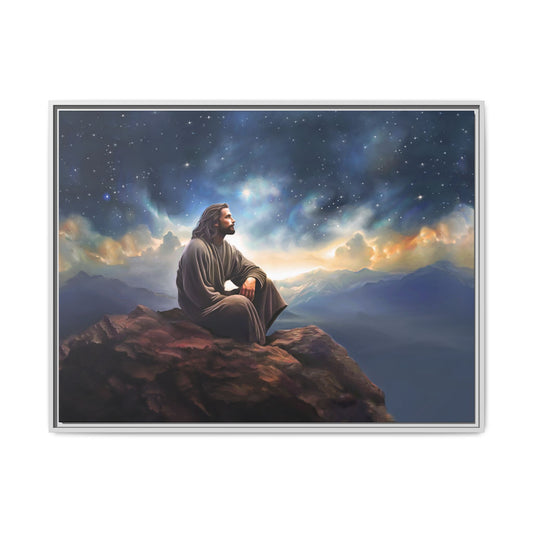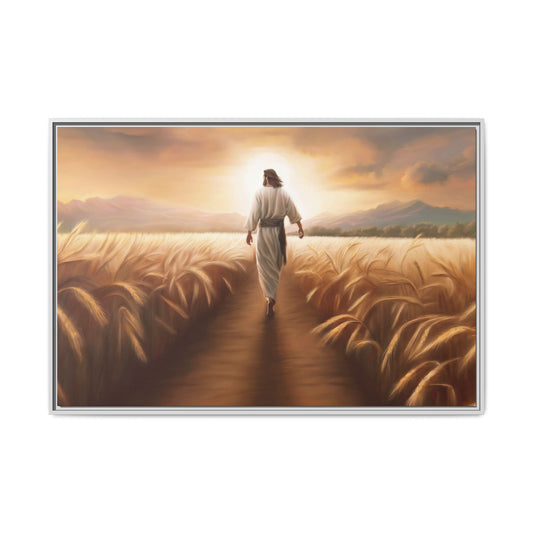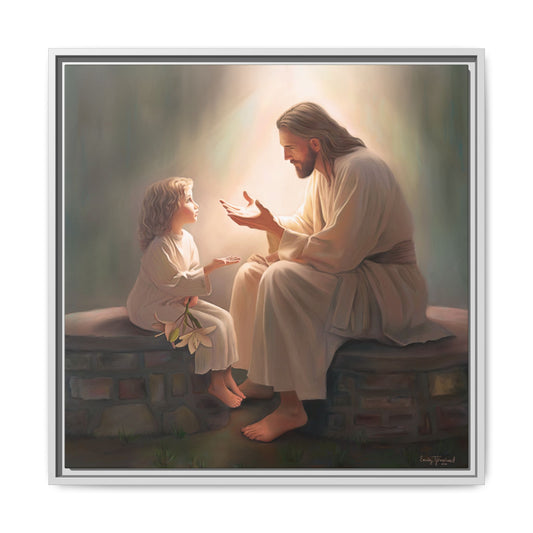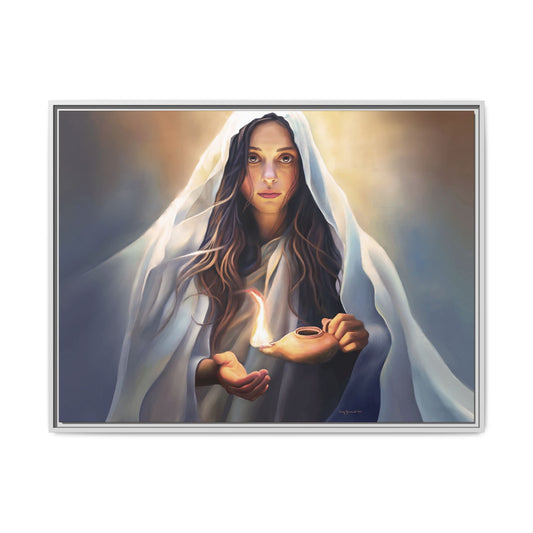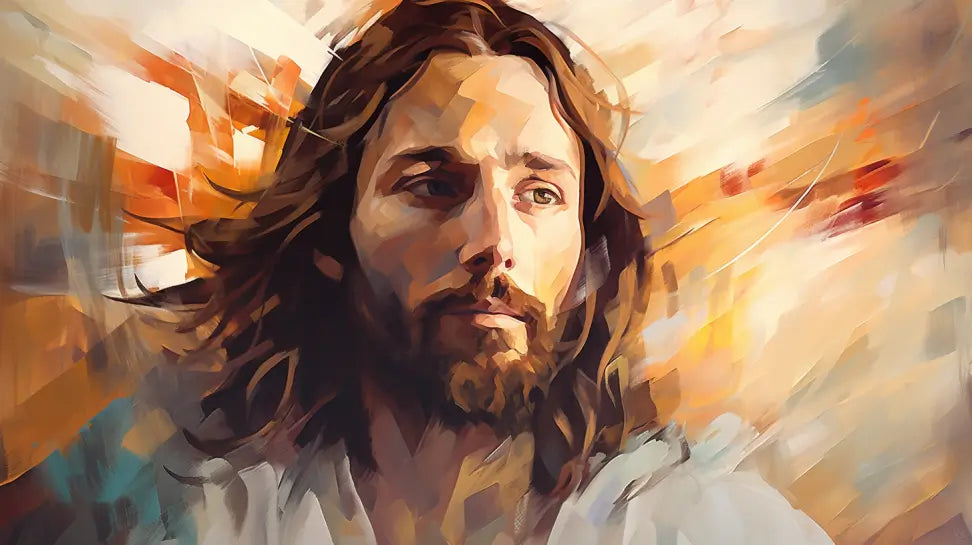
Jesus Portrait
Share
From the earliest Christian symbols to modern art, Jesus' portrait has evolved over the centuries. In this article, we explore the historical, theological, and artistic significance of Jesus' portrait, as well as the role it has played in evangelism and outreach. For hundreds of years, Jesus' portrait has been used to catalyze dialogue and understanding.
Isaiah 9:6: 'For to us a child is born, to us a son is given, and the government will be on his shoulders. And he will be called Wonderful Counselor, Mighty God, Everlasting Father, Prince of Peace.' This prophecy highlights the divine roles and attributes of Jesus, providing a rich source of inspiration for portraying His majesty and compassionate leadership. Luke 15:4-6: 'Suppose one of you has a hundred sheep and loses one of them. Doesn’t he leave the ninety-nine in the open country and go after the lost sheep until he finds it? And when he finds it, he joyfully puts it on his shoulders and goes home.' The parable of the lost sheep is emblematic of Jesus's mission to seek and save the lost, offering a poignant image of His redeeming love and mercy. Matthew 17:2: 'There he was transfigured before them. His face shone like the sun, and his clothes became as white as the light.' The Transfiguration of Jesus offers artists a dramatic and mystical moment to depict, showcasing His divine glory and the revelation of His divine nature to Peter, James, and John. Matthew 25:35-36: 'For I was hungry and you gave me something to eat, I was thirsty and you gave me something to drink, I was a stranger and you invited me in, I needed clothes and you clothed me, I was sick and you looked after me, I was in prison and you came to visit me.' As taught by Jesus, these acts of mercy encapsulate the Christian call to service and love for one's neighbor, offering a narrative framework for portraying Jesus's teachings on compassion and social justice. These scriptures provide insight into the life and teachings of Jesus and offer artists a profound spiritual and thematic basis for creating a "Jesus Portrait" that transcends historical and cultural boundaries, aiming to capture the essence of His divine mission and impact on the world.
Through these diverse scriptural lenses, a "Jesus Portrait" becomes more than a representation of physical likeness; it evolves into a visual testimony of His teachings, actions, and the transformative power of His love and sacrifice, inviting viewers into a deeper contemplation of His enduring presence and influence.






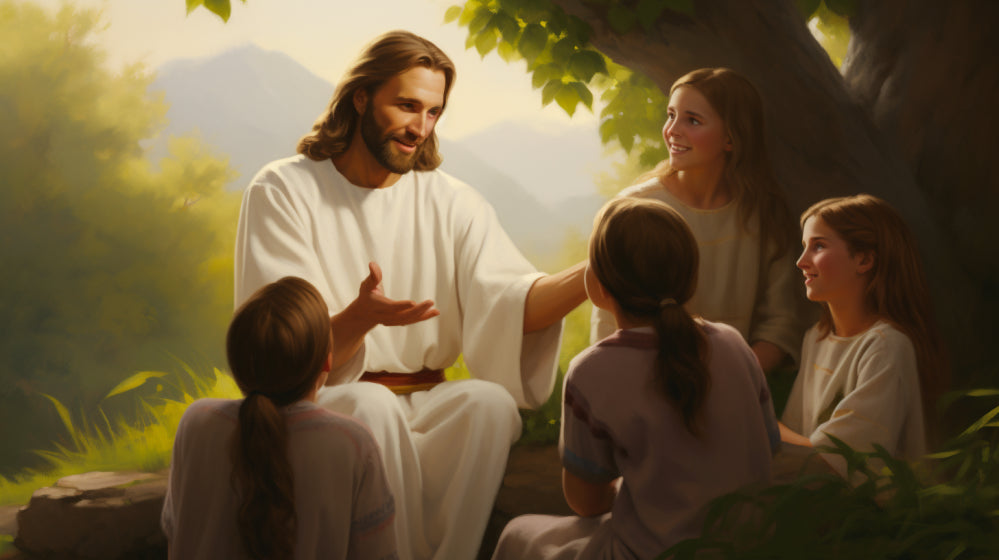







 Respect for others' beliefs, cultural traditions, and religious diversity should be considered. Here are 3 key points to consider:
Respect for others' beliefs, cultural traditions, and religious diversity should be considered. Here are 3 key points to consider:




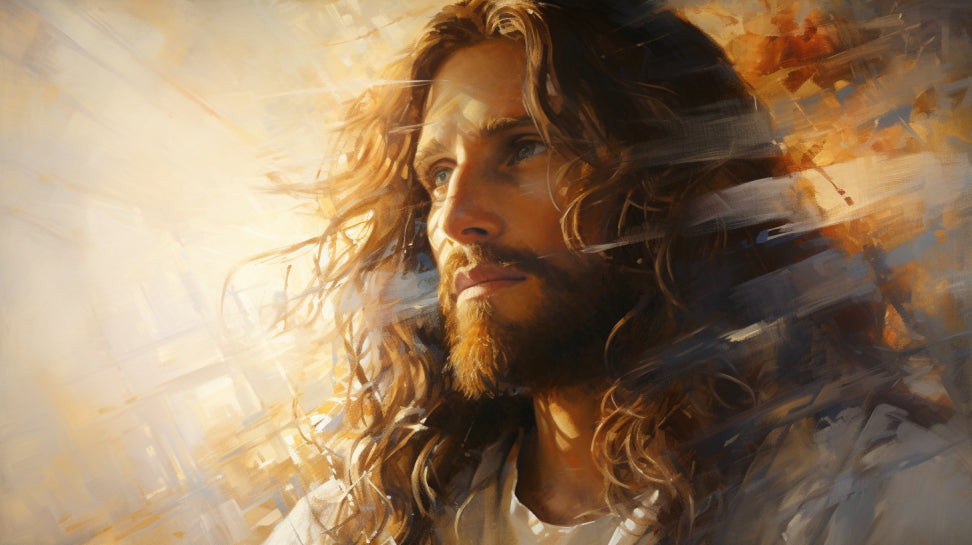 Through the centuries, Jesus portraits have inspired and encouraged people to go deeper into their faith and relationship with God. These images of Jesus and other spiritual artforms clearly still have the power to touch lives today.
Through the centuries, Jesus portraits have inspired and encouraged people to go deeper into their faith and relationship with God. These images of Jesus and other spiritual artforms clearly still have the power to touch lives today.
Key Takeaways
- The depiction of Jesus in early Christian art and architecture evolved over time, with a standardized form of a fully bearded Jesus with long hair emerging around AD 300.
- Images of Jesus tend to show ethnic characteristics similar to the culture in which the image was created, leading to variations in his depiction across different regions and cultures.
- The depiction of Jesus faced controversy and opposition throughout history, with some Christian denominations considering images of Jesus as idolatrous and avoiding their display in places of worship.
- Early Christian art often represented him indirectly through symbols and personified figures.

Importance of Worshipful Expressions of Art
As worshippers, we recognize the importance of expressing our devotion through art. Family and biblical iconography have been integral to Christianity since its inception and have been used to represent Jesus and his teachings. Depictions of Jesus are often used to focus our attention on the message of the gospel, and to encourage meditation and thoughtful contemplation on the divine. Art can also be used to create an atmosphere of worship and reverence, and to bring us closer to God. By creating artworks that are visually pleasing and spiritually meaningful, we can use the power of art to draw us closer to God. With the right combination of creativity, reverence, and biblical understanding, we can create worshipful expressions of art that will move us closer to Jesus and our faith.What the Scriptures Say:
Various scripture references can inform and inspire artistic depictions of Jesus Christ, capturing more than just His physical appearance, which remains largely undocumented in the scriptures, but more importantly, the essence of His character, teachings, and divine mission. These scriptural moments provide artists with thematic inspiration for portraying Jesus in ways that resonate with His role as the Savior, teacher, and exemplar of divine love and compassion. Various scriptural references attempt to capture the multifaceted nature of Christ's ministry and character:Isaiah 9:6: 'For to us a child is born, to us a son is given, and the government will be on his shoulders. And he will be called Wonderful Counselor, Mighty God, Everlasting Father, Prince of Peace.' This prophecy highlights the divine roles and attributes of Jesus, providing a rich source of inspiration for portraying His majesty and compassionate leadership. Luke 15:4-6: 'Suppose one of you has a hundred sheep and loses one of them. Doesn’t he leave the ninety-nine in the open country and go after the lost sheep until he finds it? And when he finds it, he joyfully puts it on his shoulders and goes home.' The parable of the lost sheep is emblematic of Jesus's mission to seek and save the lost, offering a poignant image of His redeeming love and mercy. Matthew 17:2: 'There he was transfigured before them. His face shone like the sun, and his clothes became as white as the light.' The Transfiguration of Jesus offers artists a dramatic and mystical moment to depict, showcasing His divine glory and the revelation of His divine nature to Peter, James, and John. Matthew 25:35-36: 'For I was hungry and you gave me something to eat, I was thirsty and you gave me something to drink, I was a stranger and you invited me in, I needed clothes and you clothed me, I was sick and you looked after me, I was in prison and you came to visit me.' As taught by Jesus, these acts of mercy encapsulate the Christian call to service and love for one's neighbor, offering a narrative framework for portraying Jesus's teachings on compassion and social justice. These scriptures provide insight into the life and teachings of Jesus and offer artists a profound spiritual and thematic basis for creating a "Jesus Portrait" that transcends historical and cultural boundaries, aiming to capture the essence of His divine mission and impact on the world.
Through these diverse scriptural lenses, a "Jesus Portrait" becomes more than a representation of physical likeness; it evolves into a visual testimony of His teachings, actions, and the transformative power of His love and sacrifice, inviting viewers into a deeper contemplation of His enduring presence and influence.
Historical Jesus Portraits
Throughout history, Jesus has been depicted in various ways. From Early Christian art to Byzantine and Medieval art, Renaissance and Baroque representations, and modern interpretations, there is a vast array of Jesus portraits created over the centuries.
Early Depictions in Early Christian Art
We've seen several early depictions of Jesus in early Christian art. These images convey ethnic characteristics similar to the culture in which they were created and have evolved. Early representations often represented Jesus with symbolic and personified figures like the Good Shepherd. Discretion was also used in early Christian art, with pictogram symbols. Before 313 AD, Christian art was not generally aniconic, with experimentation occurring when Christians gained land and capital. This eventually transitioned to Byzantine art, which continued to use Christian symbolism and iconography.Iconic Jesus Portraits in Byzantine and Medieval Art
We have seen iconic Jesus portraits in Byzantine and Medieval art, depicting him with a halo, rich robes, and a beard. These portraits were created to reflect the physical image of Jesus established by the 4th century AD. The portraits are usually based on earlier prototypes but have evolved to reflect changing cultural norms. These portraits of Jesus often incorporate traditional symbols, such as the Lamb of God, a dove, and a cross. The portrait of Jesus Christ has become a cornerstone of Christian art and has been reproduced in various styles throughout the centuries. Despite the controversy surrounding the depiction of Jesus, these iconic images have stood the test of time and remain an important part of Christian history and our ability to teach the messages of Christ. The portrait of Jesus is a powerful symbol of faith, hope, and sacrifice, and continues to inspire people around the world.
Renaissance and Baroque Representations of Jesus
Drawing from the conventions established by Byzantine and Medieval art, Renaissance and Baroque artists sought to create more lifelike representations of Jesus. These religious artists sought to capture Jesus' true image. This period saw a shift towards portraying Jesus in more naturalistic poses, with a focus on conveying emotion in his facial expression. Notable examples include:- Michelangelo's Pietà
- Raphael's Transfiguration, which portrays Jesus in a moment of divine revelation
- Guido Reni's Adoration of the Shepherds, which shows Jesus as a baby

Modern Interpretations and Contemporary Artworks
Building on the Renaissance and Baroque representations of Jesus, modern interpretations of the historical Jesus have emerged in contemporary artworks. Portraits of Jesus now take a variety of forms, from abstract designs to traditional oil paintings. Contemporary artworks typically emphasize the humanity of Jesus, focusing on his physical features and expressions. These portraits are often designed as an exploration of faith, with the artist's own interpretation of Jesus' personality and divinity. Designers are increasingly finding innovative ways to portray Jesus, incorporating a variety of materials and techniques. The use of multimedia and computer-generated techniques is becoming more popular, allowing for greater artistic expression. Artificial intelligence is becoming increasingly more capable of providing references, greatly saving the artist time and hassle with finding and photographing models. Despite the increasing diversity of these portraits, the theological significance of Jesus remains a central focus.Theological Significance of Jesus Portraits
Exploring the theological significance of Jesus's portraits reveals a deeper understanding of Jesus' humanity, divine nature, and symbolism and metaphors used to represent him. It provides insight into the complex relationship between faith, art, and theology.
Exploring the Humanity of Jesus
From the earliest depictions of Jesus, the artistic and symbolic representations have sought to portray God's love for humanity. In Jesus, God demonstrates his immense love for us. Jesus portraits can illustrate Jesus' ability to experience the full range of human emotions.
Representing the Divine Nature of Christ
Jesus Christ is the ultimate representation of God's presence among us, and the portraits of him throughout history have sought to capture this divine nature. Historical portraits of Jesus vary across different cultures and regions, reflecting the ethnic characteristics of their makers. Images of Jesus have often been used to communicate spiritual truths and evoke feelings of awe and reverence. Portraits of Jesus can be seen as a visual reminder of the divine nature of Christ and provide a source of inspiration and hope.
Symbolism and Metaphors in Jesus Portraits
By examining the symbolism and metaphors found in Jesus portraits, we can uncover the theological significance of these works of art. Jesus was often symbolized by fish, peacock, lamb, and anchor in early Christian art before being depicted in human form. Moreover, the iconic image of The Good Shepherd was a popular representation of Jesus in early Christian art. These symbols and metaphors convey the divine nature of Jesus. Furthermore, symbols also reflect the lack of a clear physical description of Jesus in the canonical Gospels. As such, understanding the symbolism and metaphors in Jesus portraits is crucial to uncovering the theological significance of these works of art.Artistic Styles and Techniques in Jesus Portraits
We can explore the different artistic styles and techniques used in Jesus portraits, including realistic and traditional approaches, impressionistic and expressionistic interpretations, abstract and symbolic representations, and multicultural and diverse depictions.
Impressionistic and Expressionistic Interpretations
While traditional styles have long been used to depict Jesus, impressionistic and expressionistic interpretations offer a more creative take on his image. Impressionist and expressionist art is characterized by its great use of color, brushstrokes, images, and symbolism. These techniques allow an artist to tell a story of Jesus and also capture his spirit and personality and sometimes teach a bit of history. Such art can inspire the viewer to look at Jesus' life in a new way. Expressionism also provides a means to explore abstract ideas, such as faith and love, more meaningfully. By expressing the emotions and feelings associated with Jesus, an artist can create a powerful and meaningful piece. These works can also show the abstract and symbolic representations of Jesus, allowing for innovative and creative approaches to his image.
Abstract and Symbolic Representations
Creative interpretations of both abstract and symbolic types can capture an artist's vision and tell a story by expressing personal thoughts and emotions. There are three main ways to approach the representation of Jesus in art: #1: Personification - using symbols such as Jonah to represent Jesus indirectly. #2: Allegory - transforming the figure of Jesus into a metaphor, such as The Good Shepherd. #3: Abstraction - creating works more open to personal interpretation. These abstract and symbolic representations provide a unique opportunity for artists to express their ideas and to move beyond the traditional, literal depictions of Jesus.
Multicultural and Diverse Depictions
By exploring the various artistic styles and techniques used in Jesus portraits, we can gain insight into the multicultural and diverse depictions of Jesus throughout history. From the 4th century onwards, Christian artists began to incorporate the native cultures and symbols of their respective regions into their depictions of Jesus. This sometimes included the use of bright colors, more elaborate details, and the incorporation of local cultural motifs. As Christianity spread to different countries and cultures, Jesus portraits began to diversify further, becoming more individualized and personalized. This diversity is seen in the various mediums and techniques used to create these portraits, such as painting, sculpting, and mosaic art. Through this multicultural approach to depicting Jesus, we can gain a diverse understanding of how Jesus has been seen throughout the centuries.
Famous Jesus Portraits Throughout History
Throughout history, famous Jesus portraits have been produced by iconic artists such as Leonardo da Vinci, Michelangelo, Rembrandt van Rijn, and Salvador Dali. Moreover, contemporary artists continue to produce remarkable works of Jesus portraits. We will now examine some of the most renowned portraits of Jesus from the past and present.
Leonardo da Vinci's "The Last Supper
We've all seen Leonardo da Vinci's iconic painting of 'The Last Supper', one of the most famous portraits of Jesus throughout history. It is an oil painting on a fresco depicting the scene of Jesus's Last Supper with his disciples. The painting is renowned for its amazing detail and subtle symbolism. Here are three key facts about the painting:- It was painted between 1495 and 1498 and is on display in the refectory of the Convent of Santa Maria delle Grazie in Milan.
- It is believed to be one of the first depictions of Jesus with a beard and long hair.
- The painting is a prime example of new artistic techniques, with a background of geometrically organized space.
Michelangelo's "Sistine Chapel Ceiling
Drawing on his experience with Renaissance art, Michelangelo masterfully crafted art is on the Sistine Chapel ceiling. His depiction of Jesus was revolutionary in that he captured Jesus as a strong, muscular man with a healthy physique, yet retained a spiritual, otherworldly quality. He was also one of the first artists to portray Jesus as a multi-dimensional character, rather than a one-dimensional symbol. Michelangelo's painting conveys a sense of compassion and understanding, with Jesus reaching out to the children of Israel. By emphasizing Jesus' humanity, Michelangelo was able to create a timeless work of art that still resonates with viewers today. As a result, it is considered one of the greatest religious works of all time.Rembrandt van Rijn's "The Return of the Prodigal Son
Another famous artwork to consider is Rembrandt van Rijn's 'The Return of the Prodigal Son'. This painting, created in 1669, is an oil-on-canvas masterpiece that depicts the moment in the biblical story of the prodigal son when he returns home to his father. It is known for its masterful use of light and shadow, highlighting the timeless story's drama. Rembrandt's painting is a vivid reminder of the power of the story of Jesus and his life to capture moments of truth and emotion. Moreover, it is a brilliant example of how art can bring the story of Jesus alive and make it more meaningful to us in the present.
The Impact of Jesus Portraits on Worship and Spirituality
For centuries, Jesus's portraits have been used to inspire faith and deepen spiritual connections. Through meditative and contemplative practices, churches and communities have interpreted them, and they have become powerful tools for personal reflection and devotional use. These artworks provide an opportunity to contemplate Jesus' life, teachings, and mission and can be found in various forms. These practices can help strengthen and deepen one's faith and understanding of Jesus and bring his portrait to life in the hearts and minds of believers.
Role of Church and Community in Interpreting Jesus Portraits
Jesus' portraits have been a source of controversy throughout history, and they continue to be hotly debated today. While some denominations allow or encourage images, others oppose it, arguing that it is idolatrous. Nevertheless, the presence of Jesus' portrait in churches can be beneficial, providing an opportunity for contemplation. Additionally, it can be a powerful symbol of his life and teachings, reinforcing the faith of the worshippers. Jesus' portraits can also help create community and belonging in churches. Creating a shared visual language can help unify and unite people of different backgrounds in shared worship and understanding.Personal Reflection and Devotional Use of Jesus Portraits
We explore how Jesus portraits can enhance worship and spirituality through personal reflection and devotional use. Through the use of Jesus portraits, we can:- Reflect on His life and teachings visually.
- Be inspired to live a life of faith and love.
- Embrace His mercy and grace in moments of need.

Inspiring Faith and Deepening Spiritual Connections
We can deepen our spiritual connections and inspire our faith by using Jesus portraits in our worship and devotional practices. Such imagery can be powerful, reminding us of Jesus' ultimate love for all people and reminding us to love all people as he did. It can also serve as a reminder to be humble and compassionate and to live according to God's word. We can use spiritual artwork in our homes, churches, and other places of worship to create a more intimate and meaningful experience of worship. We can also use them as visual aids for Bible study, helping to bring the scriptures to life. Jesus portraits can be a powerful tool for connecting with Jesus and inspiring our faith.
Cultural Sensitivity and Respect for Diversity
As creators of Jesus portraits, it is essential for us to practice cultural sensitivity and respect the diversity of religious beliefs. Different cultures may have different interpretations of Jesus and his teachings and different levels of comfort with depicting him physically. For instance, some may prefer to represent Jesus only symbolically, while others may embrace figurative art. We should strive to understand the unique perspectives of diverse religious communities when creating Jesus portraits. Ultimately, it is up to us to create art that is in line with our values of respect for diversity and cultural sensitivity. With this in mind, we must consider the appropriateness of depicting Jesus in different contexts. Respect for others' beliefs, cultural traditions, and religious diversity should be considered. Here are 3 key points to consider:
Respect for others' beliefs, cultural traditions, and religious diversity should be considered. Here are 3 key points to consider:
- Respect for historical and authoritative images of Jesus.
- Sensitivity to ethnic characteristics in Jesus' depiction.
- Avoidance of idolatry.
The Role of Jesus Portraits in Evangelism and Outreach
Using Jesus portraits in missionary work can be a powerful way to draw people to Christ. From opportunities to share the Gospel to engaging children and youth, Jesus portraits offer a visual representation of God's love that can initiate conversations and promote further exploration of the faith. Visual representations of Jesus captivate the imagination. Whether it's through traditional art, video, or digital media, there are numerous ways for believers to engage in missionary work:- Utilize various art forms to create meaningful images of Jesus or spiritual devotion.
- Leverage video to share stories of how Jesus has impacted individuals' lives.
- Take advantage of digital media to create an online presence that serves as a platform to spread the gospel.

Engaging Children and Youth with Jesus Portraits
By engaging children and youth with Jesus portraits, we can effectively initiate conversations about faith and encourage spiritual growth. Such conversations are important for developing a sense of spirituality in young people. To do this, we can focus on the following aspects:- Create a welcoming atmosphere that encourages open dialogue and exploration of faith.
- Use artwork to teach biblical stories, discuss spiritual concepts, and provide a visual example of Jesus' life and teachings.
- Foster a sense of community and belonging through group activities such as Bible study.



 Through the centuries, Jesus portraits have inspired and encouraged people to go deeper into their faith and relationship with God. These images of Jesus and other spiritual artforms clearly still have the power to touch lives today.
Through the centuries, Jesus portraits have inspired and encouraged people to go deeper into their faith and relationship with God. These images of Jesus and other spiritual artforms clearly still have the power to touch lives today.

